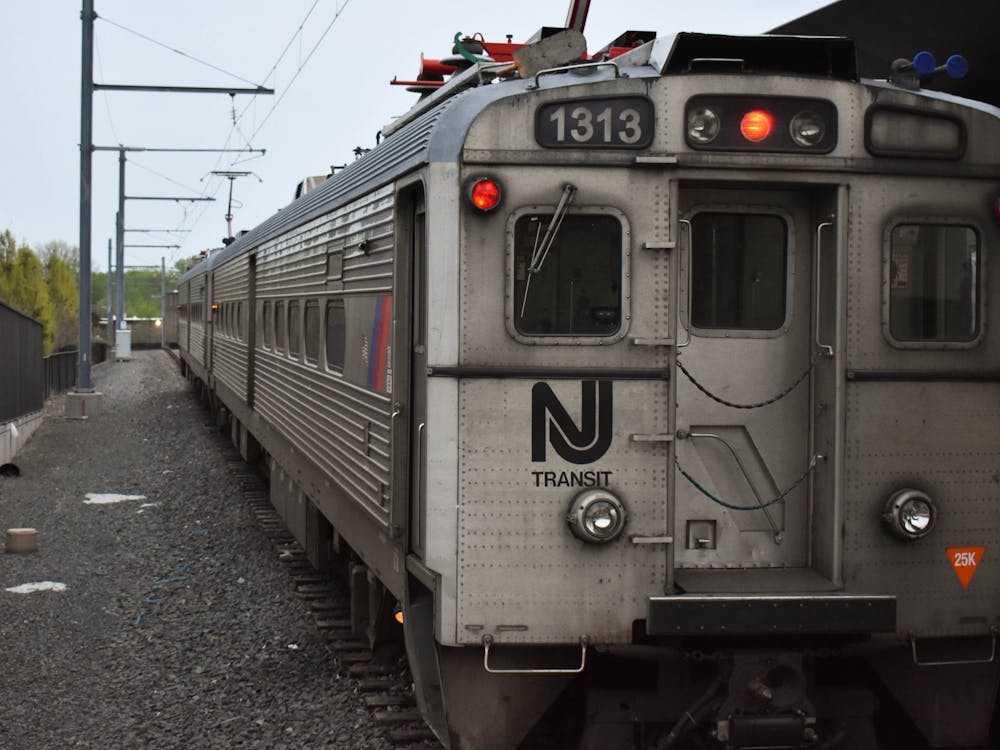That same year, I moved into my current office in East Pyne. For a space in the Department of Classics, it’s very good. To begin with, though certainly not big, it’s larger than a broom closet. In addition, it gets dazzling light through attractive windows that thankfully do not look out over the path of the tour groups that chatter their way through the courtyard hour after hour.
But even if I were in a less good office, I’d be for the most part happy in East Pyne. After all, real estate is largely about location, and East Pyne’s is hard to beat. Here at the campus’ traditional heart — right between the nerve centers of Nassau Hall and Firestone Library and only steps from Small World — we classicists ply our traditional trade, in the congenial company of friends in such departments as German and comparative literature. It’s more than enough to make one want to go to work in the morning.
The problem, however, is that there really isn’t enough space, and East Pyne is, for better and for worse, not a building it would be easy to expand. (Anyway, it and Chancellor Green were reopened a decade ago after a two-year — and in my opinion not very successful — renovation.) On the individual level, the offices that my colleagues and I occupy, though not broom closets, are too small for us to do our job well. Worse is that the Department of Classics as a whole no longer fits, and since we also have hopes of expansion, it is likely that we will be moved out before long.
This presents what in bureaucratese is known as an opportunity, but there are reasons for worry as well. After all, it is clear that no new building is going to be built near Nassau Hall. (The only centrally located structure to be commissioned from scratch since Firestone, completed in 1948, is the unfortunate Scheide Caldwell House of 2004, which in plain speak might be called a missed opportunity.) In simple terms, if Classics moves, we will be further away — and very likely across a busy two-way street — from Firestone, of which we are exceptionally heavy users. Obviously, then, we have to hope that the new space will be worth it.
Of course it isn’t going to be new space, strictly speaking. I’d love to be proved wrong, but I see next to no chance that any department in the humanities is going to receive a new, much less architecturally important, building in the next decade. In his engaging 2012 book “Princeton: America’s Campus,” W. Barksdale Maynard ’88 notes that former University Architect Jon Hlafter, who retired in 2008, expected that by 2020, the campus would be 3.5 million square feet larger than in 1990: “the equivalent of eight Firestone Libraries or ninety-two Nassau Halls!” So a lot of construction is going on, but new spaces dedicated to humanistic inquiry are few and far between: In my lifetime, now in its fifth decade, the only exception aside from the (small) Scheide Caldwell House has been Marx Hall, completed in 1993, which is in any case an addition to 1879 Hall rather than a self-standing structure. As the University promotes a “science neighborhood” and as the Wallace Social Science Building, Sherrerd Hall and now Peretsman-Scully Hall have risen up, the humanities get hand-me-down space, not to mention a forcible separation from the arts (though what exactly will come of the ambitious building program for the Lewis Center remains to be seen).
The inattention to humanistic space has consequences, and you don’t have to have read Gaston Bachelard’s classic treatise “The Poetics of Space” to imagine what they might be. Here’s one example. The Saturday night banquet for this year’s Creative Arts and Humanities Symposium, which I mentioned in another context last month, was held in the spectacular atrium of the new Frick Chemistry Laboratory. After spending the morning in the Frist Campus Center — a building that historian Tony Grafton, who was likewise given space in the ‘Prince’ in 2006, described in one of his first columns as an “aesthetic catastrophe” — it is not surprising that a number of the humanistically inclined high school seniors we had invited to campus said that it was obvious that what Princeton values are the sciences. Everyone already knows that the humanities sit low on the hierarchy, and for a liberal arts institution to pay substantially more attention to the space occupied by scientists and social scientists just exacerbates the problem. And it is a real problem, recognized not only by whiny professors in the humanities: Check out the 2007 ‘Prince’ editorial “Capital for the liberal arts.”
One reason I have held onto my space in the Fourth Estate all these years is my belief that the humanities need advocates. If I cannot fit the 890 students I’d like to talk to into my space in East Pyne, at least I have my 890 words. Will they have an effect? Probably not, but watch this space.
Joshua Katz is a professor in the Department of Classics. He can be reached at jtkatz@princeton.edu.







